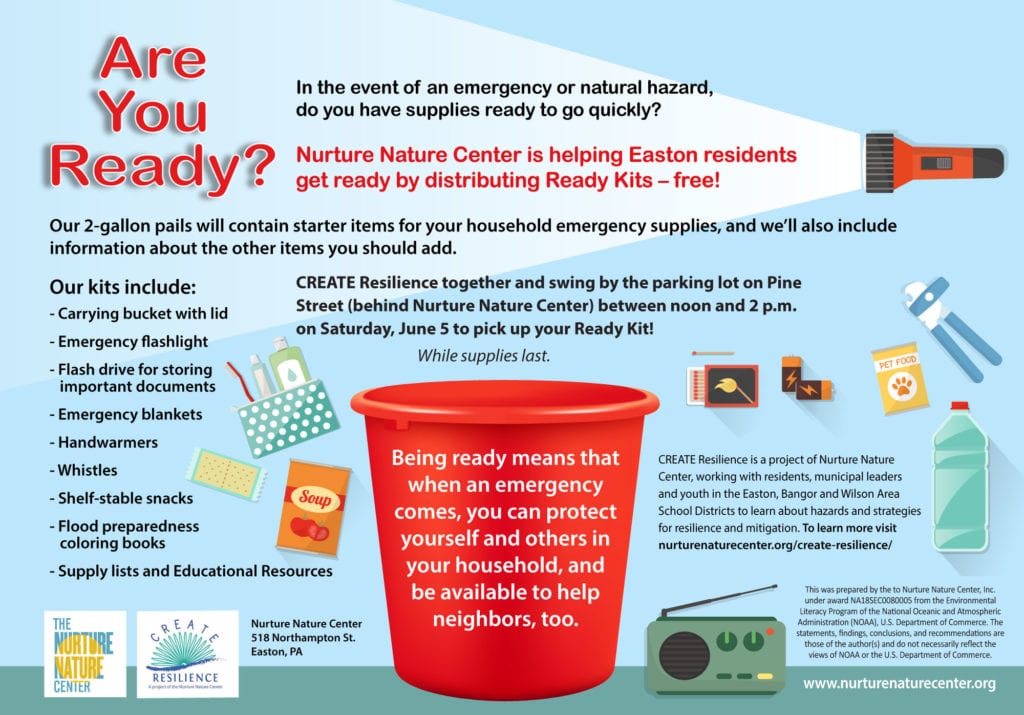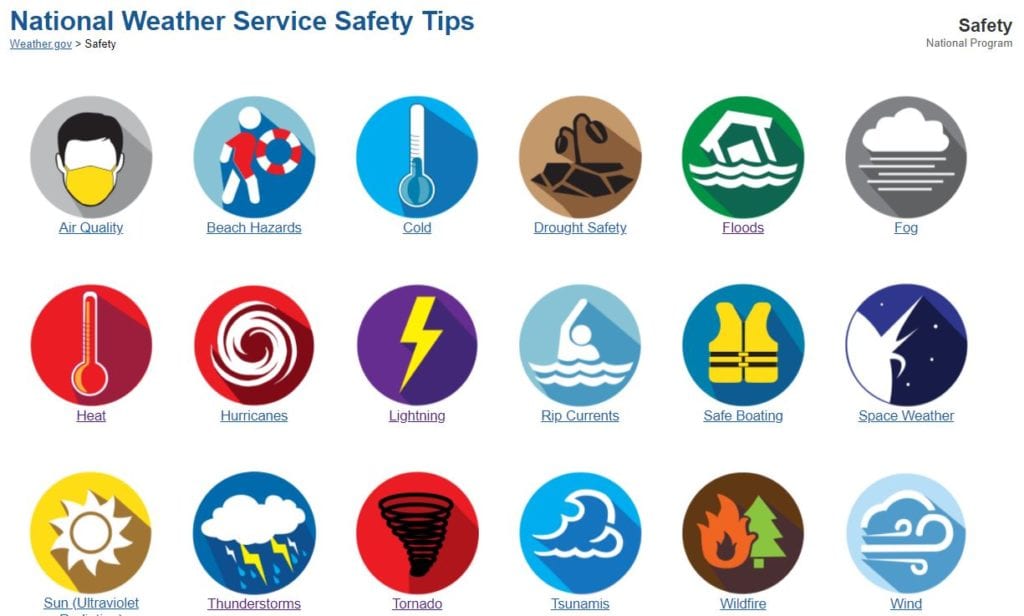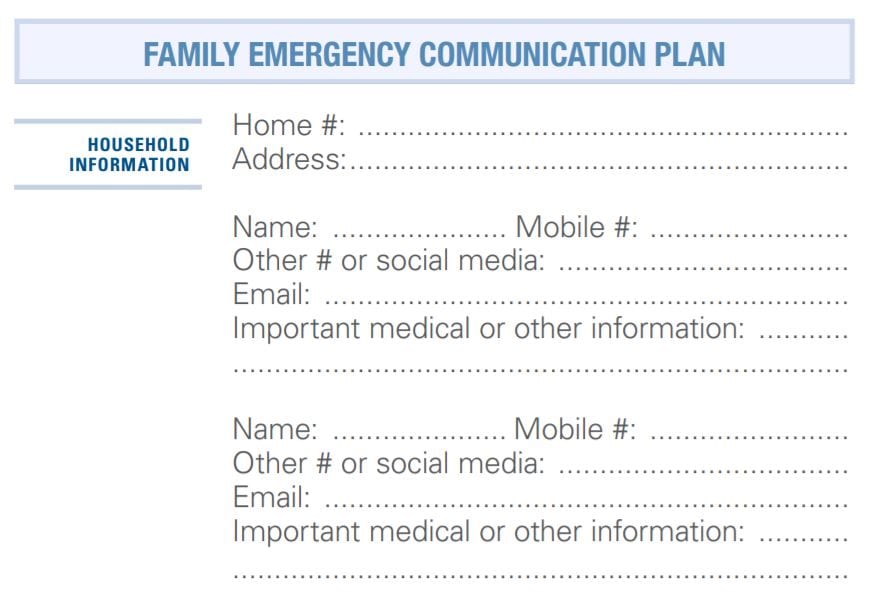Confession time: despite working at an organization that focuses on helping people prepare for natural hazard events, I never formally sat down with my own family to take the recommended steps for emergency preparedness – until this week. With Hurricane Preparedness Week occurring May 9-15 and Nurture Nature Center hosting upcoming emergency preparedness kit distributions in June, I decided to stop putting it on the backburner. It was time to actually take the steps that I know help families protect themselves and their loved ones during a flood, hurricane, severe winter storm, or other extreme weather event. These include:
- Seeking out information about risks that may affect where I live and work, and knowing how I would get up to date information during a hazard event.
- Creating a family emergency plan.
- Assembling an emergency kit.
Along the way, I tracked how easy it was to complete each step, how long it took me, and any helpful resources I found for getting prepared. If I, as an employee of Nurture Nature Center, have long procrastinated on taking these steps, I am sure others are in the same boat. If that’s you, my hope is that a concrete account of exactly what family emergency preparedness entails will encourage you to complete similar steps in your own life.
- Gathering information (15 minutes – 1 hour)
If you’ve lived in your current neighborhood for any length of time, you probably already have a good idea of which natural hazards might affect you. Past personal experiences or stories from neighbors might involve hurricanes, flooding, high winds, and any of the accompanying dangers (power outages, downed trees, blocked roadways, etc.). However, you may not know exactly how often these events are expected to strike, or their relative risk in terms of things like duration, extent, and warning time. Before you create your emergency plan or kit, it’s important to have a background understanding of the nature of the hazards you are preparing for. In addition, during this research you can identify sources that will provide up-to-date information during a particular hazard event – forecasts, severe weather watches and warnings, road closures, evacuation orders, and other critical information for your decision making.
I found that the above information was readily available, and it only took me about 20 minutes to answer the main questions I was concerned about: which hazards are most likely in my area? How are those hazards likely to unfold and what risks will those hazards bring? How can I get updates and information during a hazard event? I used the following resources for this research:
Hazard background info
– General: https://www.weather.gov/safety/
– Regional: county and municipal hazard mitigation plans
Lehigh Valley Hazard Mitigation Plan
CREATE Resilience Resources
– Neighborhood: Talked with family members about extreme weather events that have affected our area in the pastForecasts
– weather.gov – enter zip code for overall weather forecast
– Middle Atlantic River Forecast Center for riverine flooding forecasts
– Hazardous Weather Outlook – regional outlook on the chance of a list of hazards occuring in the coming weekSigning up for emergency alerts and updates
– With a smartphone, you are automatically enrolled in a nationwide text alert system, Wireless Emergency Alerts (WEA)
– County emergency management agency provides info on how to register for text alerts
– Municipal website provides information on how to register for local alerts, if available – text, email, and/or phone callEven though this step took me less time than watching an episode of a TV show, I needed the extra motivation of writing this blog post to take it. Most people won’t write a blog post about their preparedness, but you can still set yourself a deadline or block out a time on your calendar to be intentional about getting this done. Maybe even stop and complete this step right now before coming back to the rest of the post, while the above list of resources is handy!
- Family emergency plan (20-30 minutes)
This step surprised me the most. I had put off doing it because most of the plan templates I found were multipage documents with long introductory sections explaining how to create a plan. I assumed that meant it would be a long complicated process requiring not only an hour plus of my own time, but also getting all of my family members to stop whatever they happened to be doing to have a lengthy discussion of emergency preparedness. However, a big part of an emergency plan is writing down important contacts and ensuring the whole family knows where the contact list is. This was very simple and only took me about 10 minutes.
Our family discussion was similarly much simpler than I expected, and only took about 15 minutes. We established meeting places outside our house, our neighborhood, and our town, identified our out of town emergency contact, and talked through how we would respond in the event of each of the hazards most likely to affect us. It’s reassuring to have that plan in place, and now that we’ve discussed it once it will be easy for us to revisit and review the plan so that we continue to feel prepared into the future. One caveat: if you have small children, it may take a bit longer to develop the plan and ensure they understand what it’s for and how to respond during an emergency. But, it’s also perhaps even more important to create a plan if you have children, so that they learn how to call 911, seek shelter during a severe storm, and use other skills to stay safe during a natural hazard event.
Resources:
– https://www.ready.gov/plan – Instructions and a template for creating a family emergency plan and communication plan - Emergency kit (2-3 hours)

This is the start of my emergency preparedness kit, including a battery operated radio with extra batteries, a blanket, a first aid kit, and shelf-stable snacks.
I started by gathering supplies from around the house – shelf-stable snacks, a flashlight and batteries, a first aid kit, a blanket, etc. Using an online emergency kit checklist, I created a list of items we did not already have that I have to purchase to add to our kit. In addition, I created a list of important documents that I have to put on a flash drive and/or make physical copies of to store in the kit. Gathering what we already had took me about an hour, and I estimate that finishing the kit will take another hour or two.
One thing that really drove home the importance of having an emergency kit was when I noticed that extra glasses or contacts were on the checklist. As someone with terrible vision without corrective lenses, I thought about what would happen if I had to evacuate without an emergency go-kit and forgot to grab extra contacts or my glasses in a rush to figure out what to bring. The thought of being in an unfamiliar place during a natural disaster and not being able to see on top of that was more than enough for me to justify the time spent putting a kit together before an emergency strikes. Depending on your family make-up and needs, it could be equally important for you to remember pet food, a leash, extra clothes, mobility aids for an elderly relative, or any number of other items. It’s great to know I won’t have to worry about forgetting something important should my family ever have to evacuate.
This step took me the longest to complete, but you can get a head start on your kit by picking up a FREE emergency preparedness starter kit at one of our upcoming CREATE Resilience events! We will be distributing 2-gallon pails with items including a flashlight, emergency blanket, hand warmers, a whistle, and shelf-stable snacks, as well as a list of what you should add to complete the kit and tailor it to your family’s needs. We’ll be holding 3 separate kit distribution events – one for residents of Easton Area School District, one for Wilson Area School District, and one for Bangor Area School District:
Easton – Saturday, June 5, 12 pm – 2 pm; Nurture Nature Center’s Pine Street parking lot
Wilson – Saturday, June 12, 11 am – 1 pm; Wilson Area High School’s parking lot
Bangor – Friday, June 25, time TBA; Bangor Borough Memorial Park (in conjunction with Bangor’s Family Movie Night event), time and event link coming soon!

Resources:
– Nurture Nature Center’s Family Go Kit List
– Ready.gov Kit Checklist
– The Red Cross, CDC, and other organizations also have similar checklists
Please join us at these upcoming events, and become familiar with your local hazards and discuss emergency meeting places, contacts, and plans with your family. I know it’s easy to think that you might as well do it next week, which turns into the week after that, which turns into the week after that, ad infinitum. When the sun is shining and the forecast is favorable it doesn’t feel pressing to be prepared for a future natural hazard. However, the best way to ensure you are prepared before an emergency situation is to prepare now, or schedule a specific time in the near future to take your preparedness actions. Even if you never have to use your emergency kit or plan, for just a few hours of effort you can increase your peace of mind that you and your family will be able to keep yourselves safe and healthy no matter what the weather throws at you.


